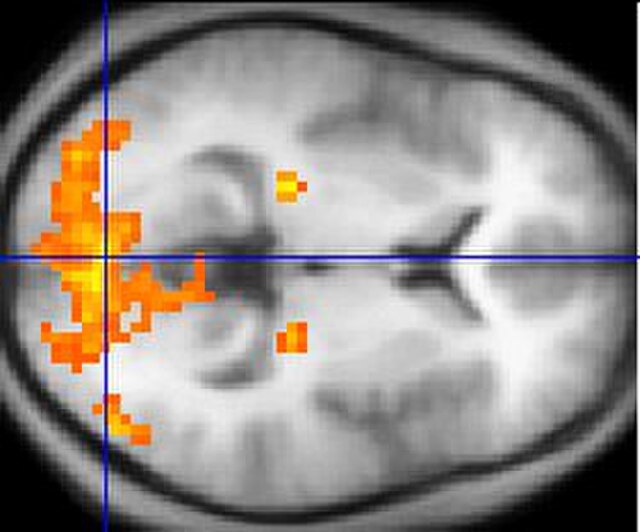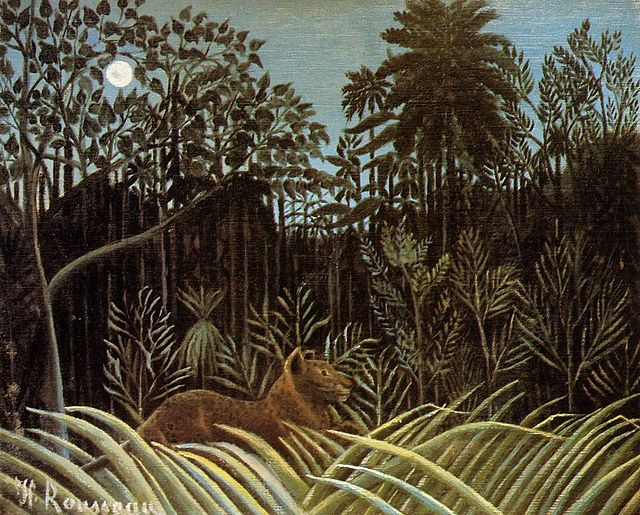Visual search is a type of perceptual task requiring attention that typically involves an active scan of the visual environment for a particular object or feature among other objects or features. Visual search can take place with or without eye movements. The ability to consciously locate an object or target amongst a complex array of stimuli has been extensively studied over the past 40 years. Practical examples of using visual search can be seen in everyday life, such as when one is picking out a product on a supermarket shelf, when animals are searching for food among piles of leaves, when trying to find a friend in a large crowd of people, or simply when playing visual search games such as Where's Wally?
A pseudo-color image showing activation of the primary visual cortex during a perceptual task using functional magnetic resonance imaging (fMRI)
Henri Rousseau, Jungle with Lion
Attention or focus, is the concentration of awareness on some phenomenon to the exclusion of other stimuli. It is the selective concentration on discrete information, either subjectively or objectively. William James (1890) wrote that "Attention is the taking possession by the mind, in clear and vivid form, of one out of what seem several simultaneously possible objects or trains of thought. Focalization, concentration, of consciousness are of its essence." Attention has also been described as the allocation of limited cognitive processing resources. Attention is manifested by an attentional bottleneck, in terms of the amount of data the brain can process each second; for example, in human vision, less than 1% of the visual input data stream of 1MByte/sec can enter the bottleneck, leading to inattentional blindness.
Focused attention
Image: Wikipedia spotlight




